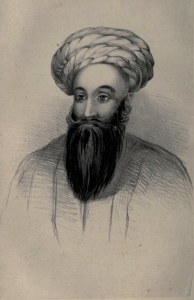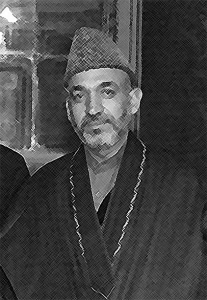by Steven R. Corman
Here is a quiz: In what South Asian war did a country invade to pursue its own interests, overthrow an existing government and establish a client regime, encounter effective resistance by local insurgents despite the superiority of its army, fight to a stalemate, and withdraw when resources and interest waned back home? If your answer did not include the British East India Company (EIC) invasion of Afghanistan in the 19th century, you should read William Dalrymple’s new book Return of a King: The Battle for Afghanistan (Knopf, 2013).
The book is an accessible, engaging, serious work of history, and it features a cautionary narrative from the past about a possible (and possibly likely) outcome of the present-day conflict in Afghanistan. Dalrymple, an award-winning history writer from the UK, recounts the intriguing tale of Shah-Shuja-ul-Mulk—by turns an actual, erstwhile, and would-be king of Afghanistan—during the adventures of the British East India Company (EIC) in the 19th century. The arc of the book follows his mis/fortunes, but along the way offers important insights into the dynamics of foreign invasion in Afghanistan. Rather than reviewing the book chapter-by-chapter, I summarize the main features of Shuja’s story before commenting on what the tale implies about the present.
Shuja, who came to power during riots in 1803, was deposed by the Barakzai clan six years later, and lived as a fugitive until accepting asylum from the EIC in 1816. Over the next 23 years he made three abortive attempts to return to the Kabul throne before succeeding on the fourth try. He did so with the backing of the EIC, who made him their figurehead ruler. But a reversal of fortunes awaited Shuja and his sponsors in 1841 when an uprising began, eventually driving EIC forces to slaughter in the mountain passes and Shuja to refuge in Bala Hisar. Shuja held his own for a time before being assassinated by his godson, and then the Barakzais returned to power.
One implication of the narrative is that Afghanistan is no easy place to rule—the title of Dalrymple’s first chapter. Disputed borders, tribal/ethnic/linguistic divisions, and blood feuds within clans and tribes meant that for the two millennia preceding the period described in the book Afghanistan had “but a few hours of political or administrative unity” (p. 3). Add to that the desire of foreign powers to extend empires Eastward—the “Great Game” between the Brits and Russians in the book—and you have a perfect recipe for political instability. Return of a King documents constant shifting back and forth between different ruling powers.
Present day Afghanistan seems to follow this same pattern, with a dizzying succession of leadership changes. After a relatively long 40-year period of stability under Mohammed Zahir Shah in the mid-20th century, he was overthrown in a coup by his cousin, who wanted ties with the Soviet Union. Shortly thereafter the PDPA took over in a revolution, creating a communist government. This led to civil war with interventions by the Pakistanis and Soviets, another coup, as assassination by the Soviets of the coup leader-come-President, and installation of a client regime. Becoming unhappy with this regime, they installed Najibullah and supported him until 1992, after which time he was overthrown by the Taliban, who ruled for five years. After 9/11 they were overthrown by the United States, which organized an election (the quality of which is in dispute) resulting in the current Karzai government. No easy place to govern, indeed.
Another implication of the narrative in Return of a King is that armed resistance to whatever regime is in power is tenacious and never be counted on to fade away. During Shuja’s first term as king, he forgave his Barakzai adversaries and even married one of the women of their clan. But the Barakzais were just biding their time, and soon began taking territory in Southern Afghanistan and preparing to attack Shuja in Peshawar. Once deposed, Shuja took up the role of the resistance, seeking an alliance with the Sikh Maharajah Ranjit Singh, which quickly went bad. He then allied himself with Singh’s enemies and tried to raise an Army to retake the throne, one of three failed attempts over 30 years. In 1939 he joined forces with the EIC to finally retake his throne, but rules a figurehead. And again, his adversaries immediately began organizing in the mountains to launch a counterattack. In all of these back and forth dealings, Afghans supported whoever was in power, but would switch at a moment’s notice once it was clear another side would win. These kinds of shifts could prove decisive in whatever conflict was taking place. Dalrymple quotes the leader of an EIC delegation: “’The victory is usually decided by some chief going over to the enemy,’ wrote Elphinstone, ‘on which the greater part of the army either follows his example or else takes flight’” (p. 65).
Again we find a close analogue in modern-day Afghanistan. The Taliban emerged from the warlords and Mujhidin who resisted the Soviet Union and its client government in the 1980s. After the Soviet withdrawal they bided their time until foreign support for the Najibullah government faded away, then they seized power. After being deposed by the United States, the Taliban did not fade away but launched an insurgency that continues to this day. Despite repeated proclamations by the U.S. and its commanders that the tide has turned in the conflict, the Taliban seem not to have gone anywhere and just recently launched a new spring offensive that is regularly claiming fresh casualties in ISAF and the Afghan government forces.
There are numerous other similarities between the past and the present offered in the book. Among them:
- Similar tribal conflicts, including the fact that Karzai is from the same sub-tribe as Shah Shuja, and facing resistance from the same tribe as did Shuja.
- The 19th century invaders were accused of being bent on the destruction of Islam, as today.
- Some British argued for an enormous increase in the number of troops, similar to today’s surge.
- Shuja, once installed by the EIC, began to push back against their efforts to control him, as Karzai has increasingly done.
What Return of a King offers the reader is perspective on how little things have changed in Afghanistan in the last 100 years. As shown in the comparisons above, the parallels between the past and present are striking and illustrate some general principles we can expect conflict in Afghanistan to follow. I have argued in the recent book Narrating the Exit from Afghanistan that a significant risk to the West’s present exit strategy is development of a repeat of history scenario—something the Taliban insurgents have explicitly predicted and are doing their best to make happen. After Western forces withdraw, the Taliban will cite any cracks they may create in the existing political order as evidence validating their predictions of a repeat of history. If this narrative gains enough traction, we can expect the switching of sides described above to quickly set in.
Mark Twain famously said, “History does not repeat itself, but it does rhyme.” While we should not over-draw the comparison between the present and the past, Return of a King at the very least makes one question the first part of Twain’s statement. It presents a powerful cautionary tale for those who are optimistic about the result of the coming withdrawal of Western forces from the country.




